Foldable iPhone: latest rumors, news and everything we know so far
Apple is reportedly working on a foldable iPhone
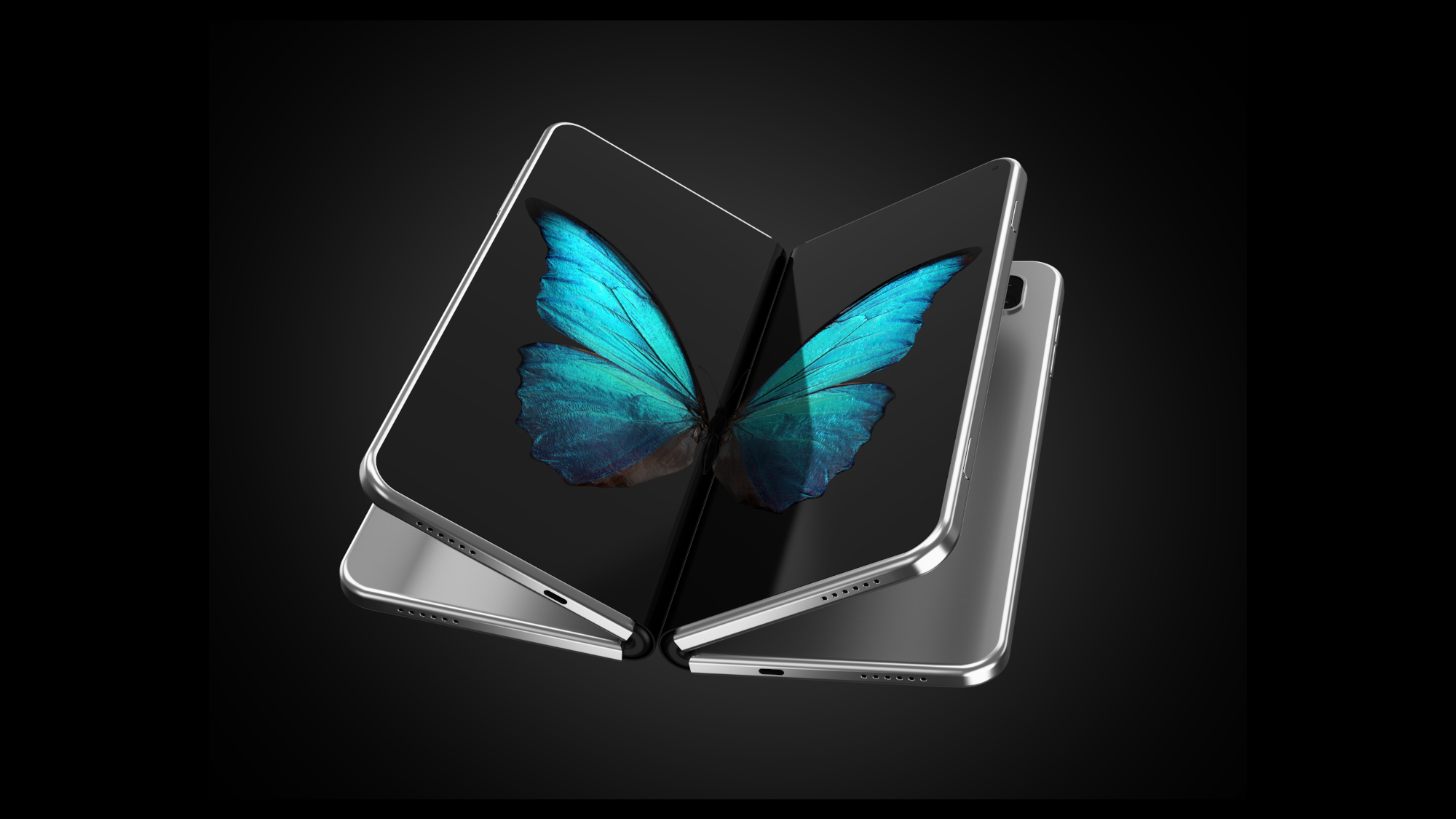
The last Apple event came and went without even the smallest of hints at a foldable iPhone. And with the rumors thin on the ground, I'd be skeptical if such a phone is even in the works; it could just be a shelved Apple project.
As it stands, our list of best foldable phones is dominated by the likes of the Samsung Galaxy Z Fold 6, Galaxy Z Flip 6, and OnePlus Open. So there's room for some iOS-orientated disruption, though when that will happen isn't clear.
Our best guess is 2025 at the earliest, when Apple can be fairly confident that the foldable phone tech is mature enough for its foray into the arena. Until then, read on for everything we've heard so far and what you need to know about the so-called foldable iPhone.

Cut to the chase
- What is it? Potentially the first folding phone from Apple
- When is it out? Possibly 2026, or maybe much later
- How much will it cost? Expect it to be expensive
Foldable iPhone release date and price
It's possible (based on multiple rumors) that the iPhone Fold could land in 2025.
But if anything, it might land much later, with a report from October 2018 suggesting Apple might first launch a foldable iPad in late 2024 or early 2025, with a foldable iPhone landing at a later date.
Another report back in February 2024 said a September 2026 launch was planned for the foldable iPhone, which would likely see it land alongside the iPhone 18. This report added that Apple was apparently moving much of the Vision Pro team over to development of this phone, and that the company is aiming for sales of 50 million. The 2026 claims have since been backed up by a leaked Apple roadmap too.
More recently still, we've heard that the foldable iPhone might be delayed from late 2026 until early 2027, and some analysts now believe the foldable iPhone project might end up getting canceled, so there's a chance we won't see it at all.
Get daily insight, inspiration and deals in your inbox
Sign up for breaking news, reviews, opinion, top tech deals, and more.
And even more recently, a TrendForce report states that Apple is "unlikely to release a foldable phone before 2027", due to the company's "strict requirements for crease and reliability".
Since then, we've heard that while a 2026 launch was previously planned, Apple has accelerated development so that it can launch the foldable iPhone in 2025.
However, the most recent foldable iPhone leaks again point to a 2026 launch. We've heard a 2026 release date multiple times in late 2024 and early 2025, so that's our best guess for now. That said, Apple is at least apparently close to choosing a display supplier for the phone.
Naturally, we don't know how much the foldable iPhone might cost if and when it does land, but given that a lot of foldable phones demand well over the $1000 / £1000 / AU$2000 mark, it's safe to expect a high price to pay. One of the few foldable iPhone price leaks we have seen so far points to a figure of $2,500 (which is around £2,220 / AU$3,970), so we'd recommend saving now.
That said, a more recent foldable iPhone price leak points to a lower but still high price of $2,000 (around £1,540 / AU$3,175), while a third leak splits the difference, claiming a price of roughly $2,300, and most recently of all we've heard the foldable iPhone will cost between $2,100 and $2,500.
But despite the likely high price, this could prove a very successful phone, with reputable analyst Mark Gurman predicting that a foldable iPhone will sell much better than any of the Plus or mini models, or the rumored iPhone 17 Air.
As for the name, we've heard mutterings that it could be called the iPhone Flip, likely referring to the Galaxy Z Flip-like patents we've seen that hint at a clamshell folding format. In truth, though, it could be called anything.
Foldable iPhone leaks and rumors
At this point, foldable iPhone rumors fall broadly into two camps: those which suggest the device will have a true folding display, and others that point towards it having two distinct screens separated by a hinge.
Several designs were revealed in a patent dump back in February 2019, some with a large display on the inside of folding sections with a single hinge, while another had two hinges for a hypothetical three displays that fold in on themselves in a Z-shaped formation.
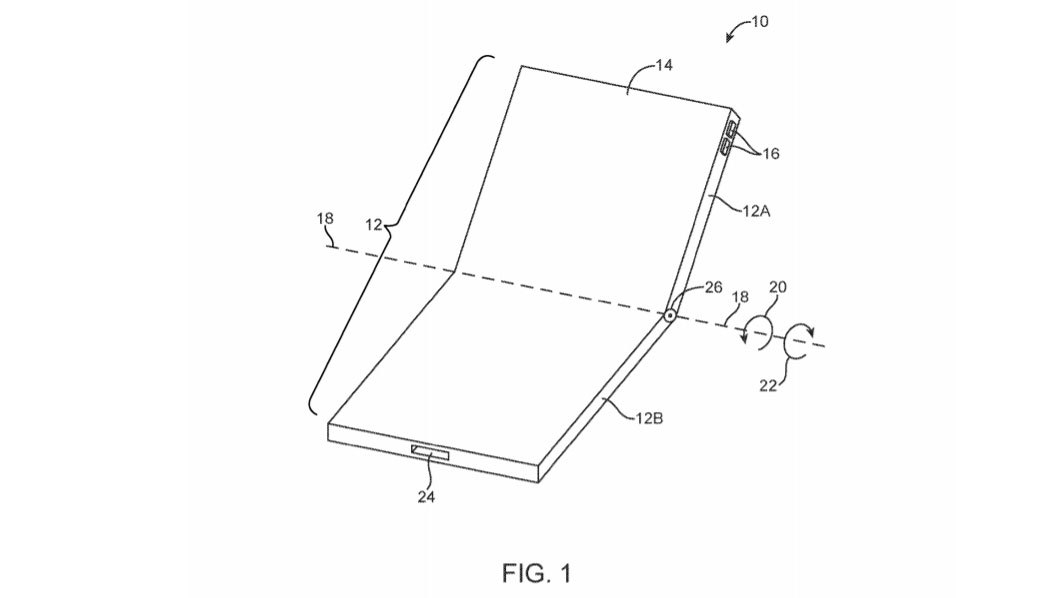
This design shows how an iPhone could look when folded.
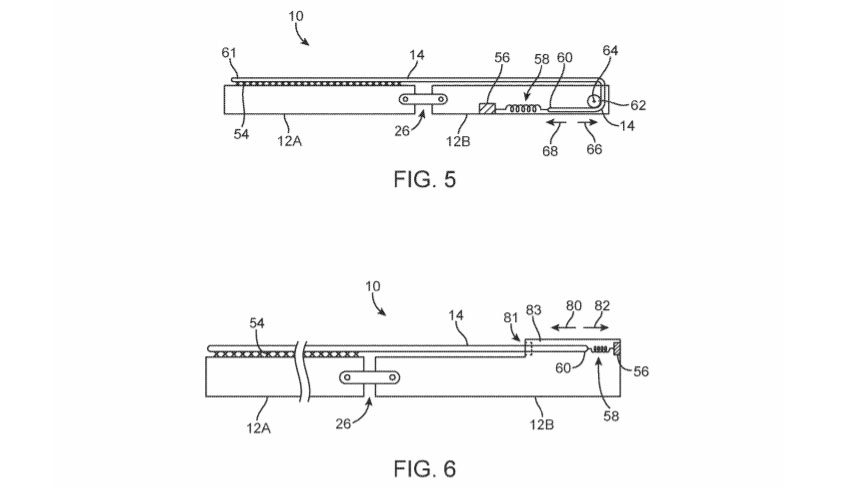
These two designs show possible ways the screen could store in the body of the device when folded.

This design shows what a device would look like when folded into three sections.
Other patents, like the one discovered in March 2020, reveal that Apple could be working on a foldable with two distinct displays separated by a hinge. While the patented design suggests the tech giant would attempt to minimize the bezel between the screens as much as possible, it would still be more noticeable than a truly folding long display.
That’s what leaker Jon Prosser suggested on Twitter in the same year: Apple’s foldable iPhone design (at the time) had two separate display panels on a hinge.
While it’s purportedly just a ‘current prototype’ and not a final design, it’s described as having rounded edges like the iPhone 11, unlike the squared-off edges on the iPhone 12 and iPhone 13 ranges.
There’s also no notch for front-facing cameras: the sensors checking Face ID will be housed in a ‘tiny forehead’ on the outer display, according to Prosser.
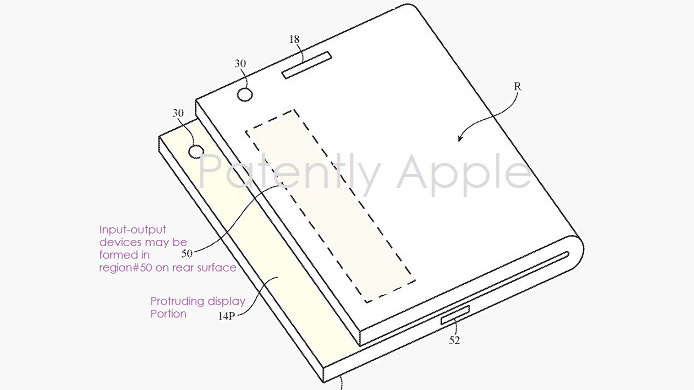
This matches a later Prosser leak that suggested the iPhone Flip may come in a clamshell shape – similar to the Motorola Razr 2020 or the Samsung Galaxy Z Flip – and the same source said it'd be sold in "fun colors."
We think that means you can expect some bold shades for the iPhone Flip when it lands.
We've seen another image of what the foldable iPhone could look like thanks to another patent, this one showing a device that folds out into a bigger device like the Samsung Galaxy Z Fold 5. This device, which we're dubbing the iPhone Fold, has one display that's longer than the other, so when it's folded shut you can see your notifications to one edge.
A separate leak suggests this folding iPhone could come with Apple Pencil support, and have a display measuring 7.3-inch or 7.6-inches across.
Indeed, we've more recently heard that Apple's first foldable may have a screen of roughly 7-8 inches, which likely means it would be a book-style foldable.
More recently, another source claimed the foldable iPhone could have a 7.9-inch screen and that the foldable display could be on the outside of the phone, like the Huawei Mate Xs 2 pictured below. This would mean there's only one display, but it can be used either like a phone or a tablet depending on whether it's folded or unfolded.


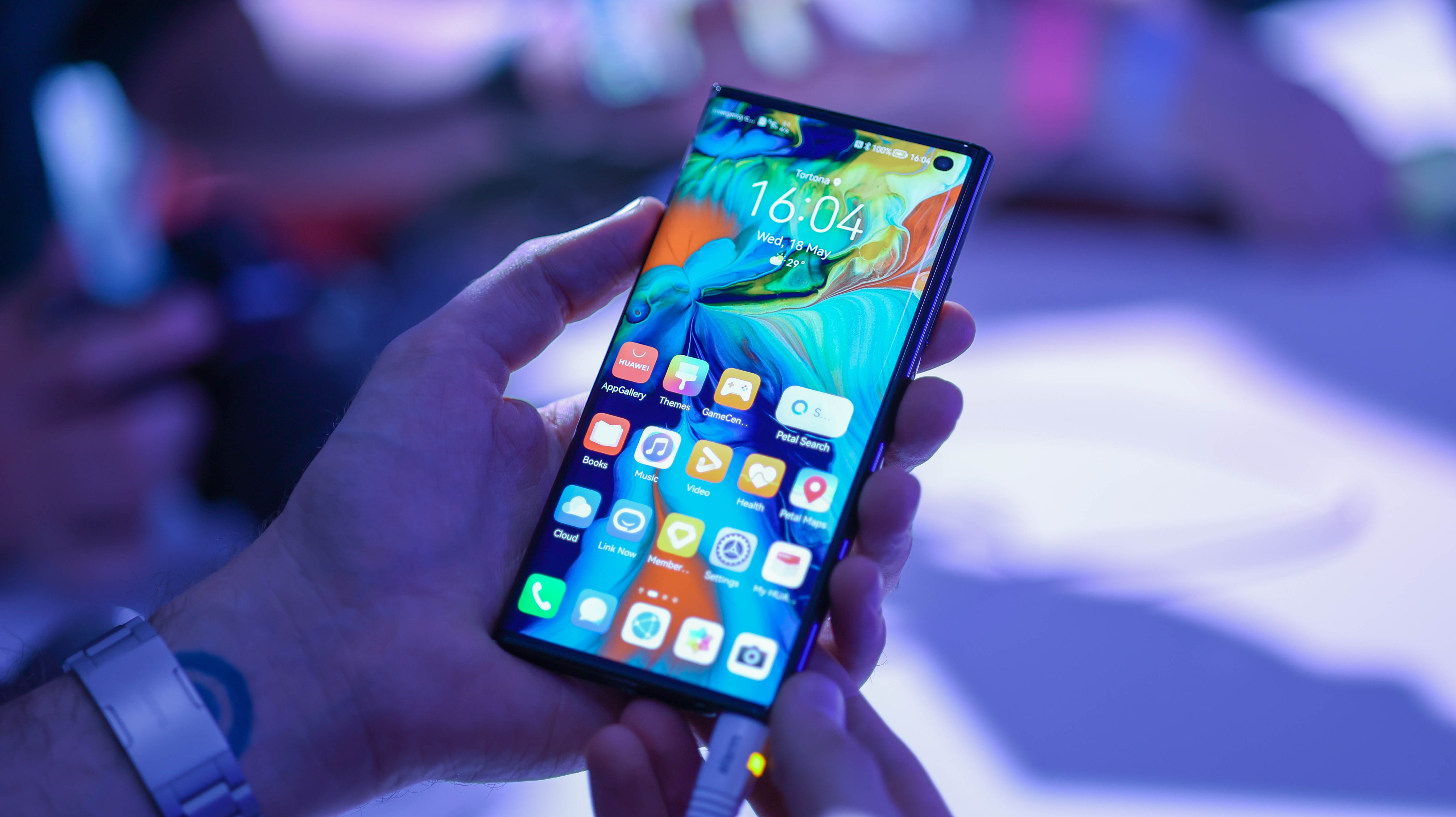
In January of 2025 we similarly heard that the foldable iPhone could have a main display of between 7.6 and 7.9 inches, along with a surprisingly small 5.3-5.5-inch cover screen. This leak adds that it will have a wider aspect ratio than the Samsung Galaxy Z Fold 6, and that it will use LTPO (low-temperature polycrystalline oxide), likely meaning a 120Hz refresh rate.
Elsewhere, we heard that the foldable iPhone might have a foldable display of over 12 inches, which sounds unusually large. They also stated that the phone would be 9.2mm thick when folded, and just 4.6mm thick when unfolded. The same source also points to a 5,000mAh battery, and a dual-lens rear camera, with an ultra-wide snapper but no telephoto.
More recently still (in February of 2025) we heard that the foldable iPhone could have 7.74-inch and 5.49-inch screens.
The same source (Digital Chat Station) has since added that the foldable screen will have a resolution of 1,920 x 2,713 and the cover screen will have a resolution of 1,422 x 2,088. They also claim that the foldable screen will have an under-display camera but that the foldable iPhone won't have Face ID.
We've also heard from an analyst that Apple is testing an Electronic Paper Display (EPD) from E Ink for the cover screen of a foldable phone. This would be like an e-reader screen, but in color, and could be left on for long periods without draining much battery.
Apple's foldable phone might also have a protective layer on top of the screen that can defend against cracks and fill in pre-existing micro-cracks, to help avoid fractures. Apple has a patent for this tech, so it's certainly something the company is toying with, at least.
Elsewhere, an Apple patent details a slim yet strong hinge that could be used with a smartphone with a flexible display. This doesn't tell us much but it's more evidence that an iPhone Fold or iPhone Flip might be in the works. On a related note, we've heard the foldable iPhone could have a liquid metal hinge for better durability.
Plus, one report also suggests that Apple has two foldable iPhone designs that have already passed durability tests. That doesn't mean this will be happening any sooner, but it's a good sign that Apple is on the right track.
The most recent Apple patent we've seen details touch-sensitive, solid-state buttons that would allow users to navigate a foldable iPhone using its edges, rather than its display alone. Alongside basic illustrations of the device (below), Apple explains how touch sensors would sit within “sidewalls” (as opposed to conventional walls) made up of “thin metal lines that are sufficiently small to be invisible to the eye."
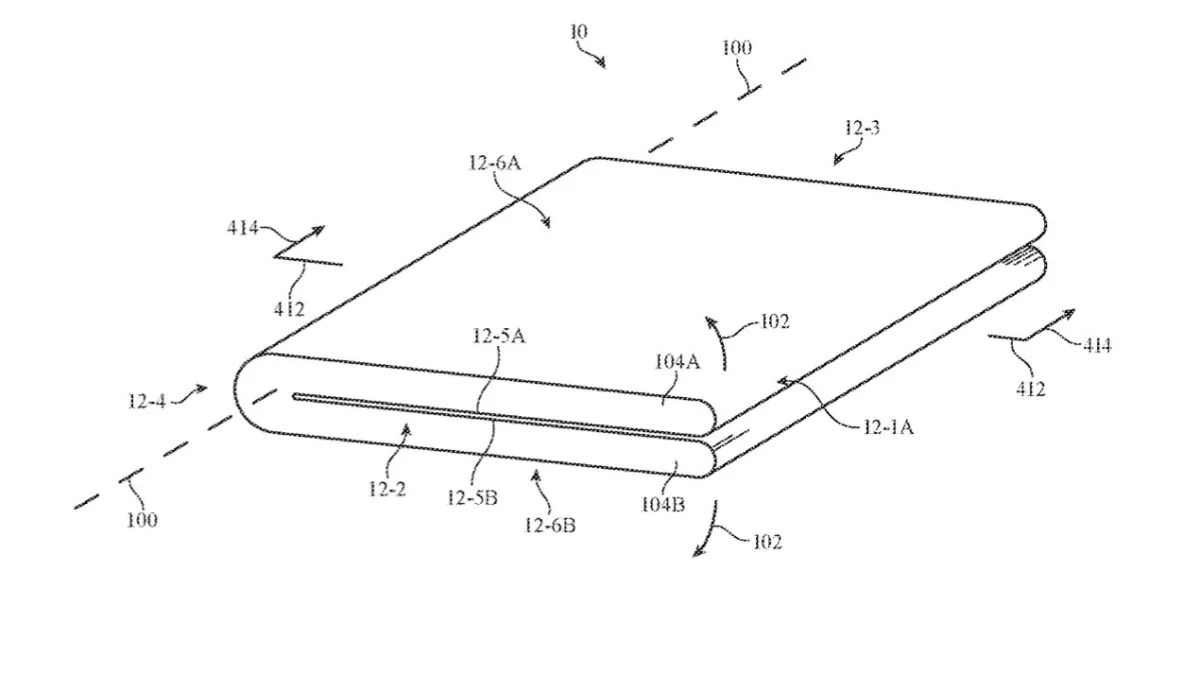
Beyond the design and display, we've heard that the foldable iPhone might have a dual-lens camera, Touch ID, and an ultra-thin battery. Despite that, the foldable iPhone could offer all-day battery life, with Apple apparently making its battery longevity a priority.
And beyond all the leaks, we've also now seen essentially a prototype iPhone Flip made unofficially by a team in China. You can see some images of this below.
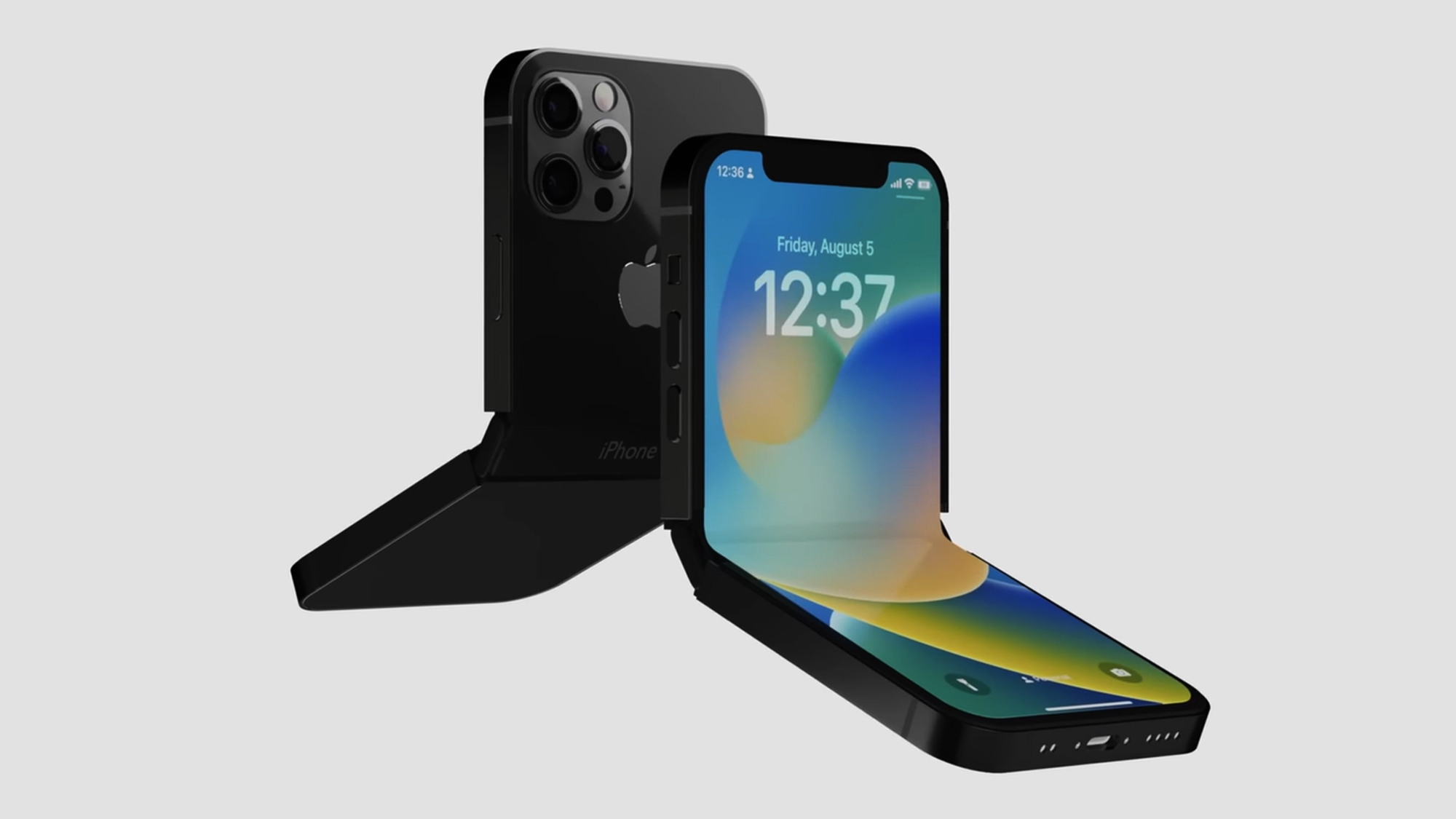
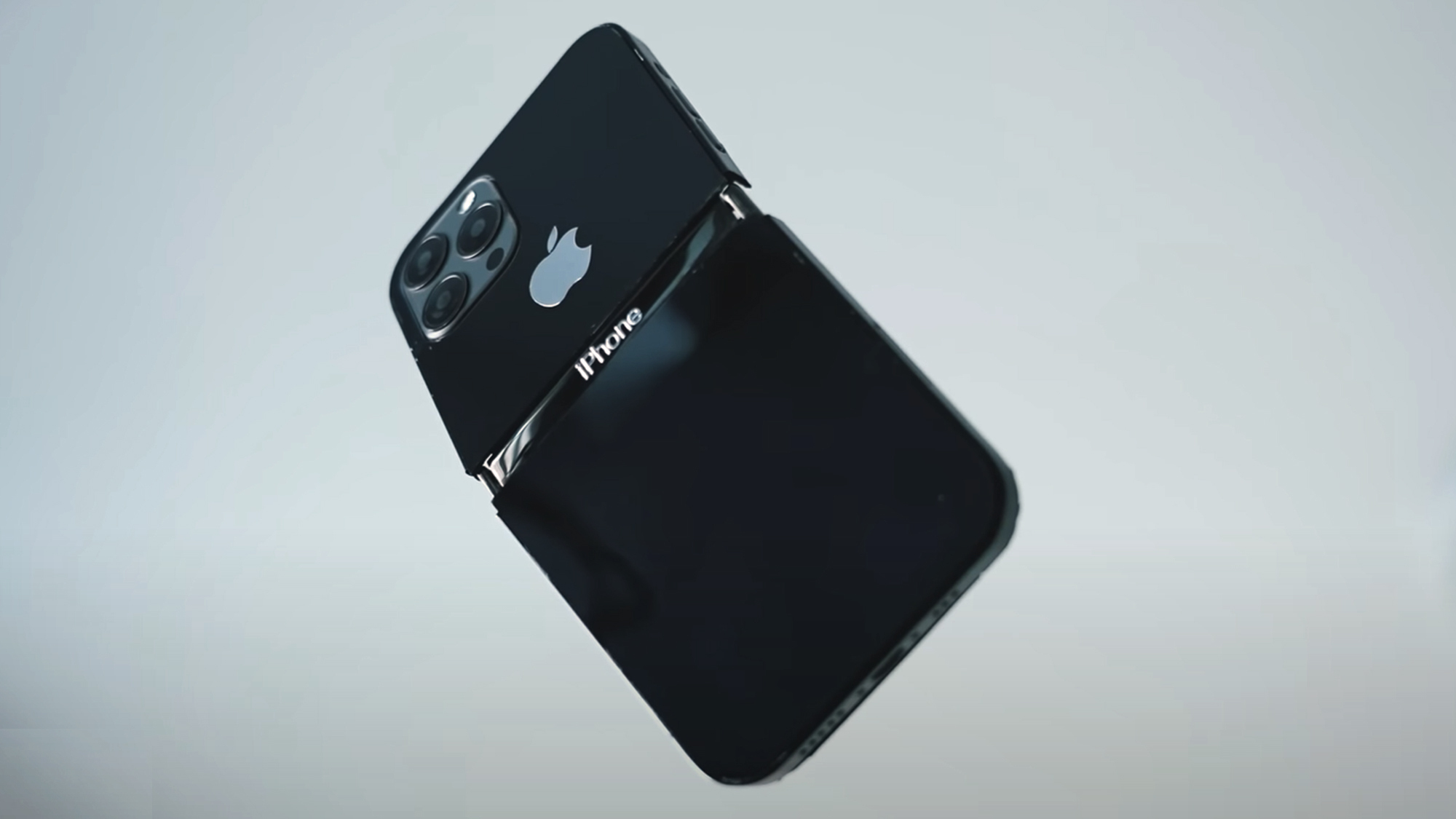
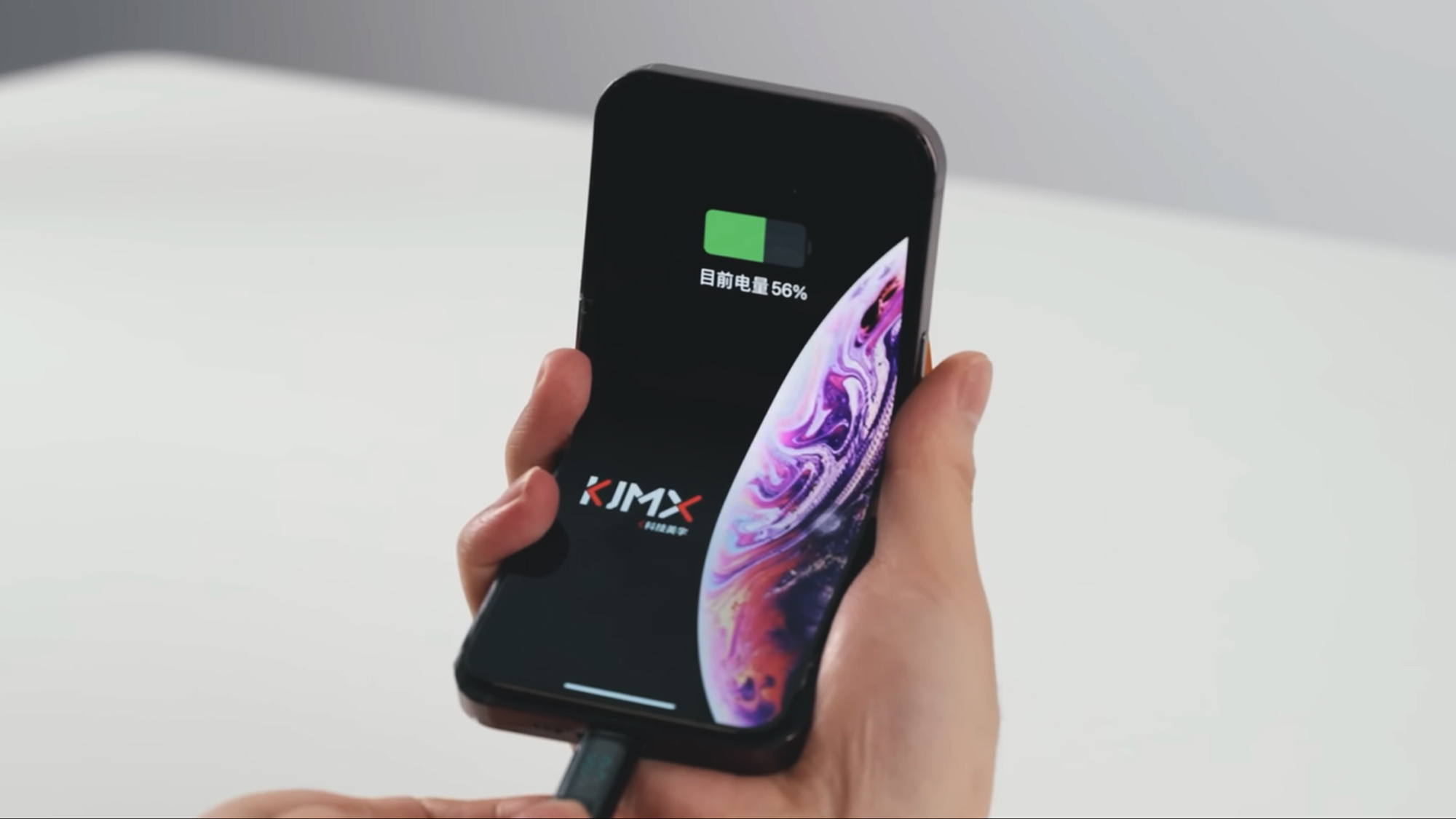
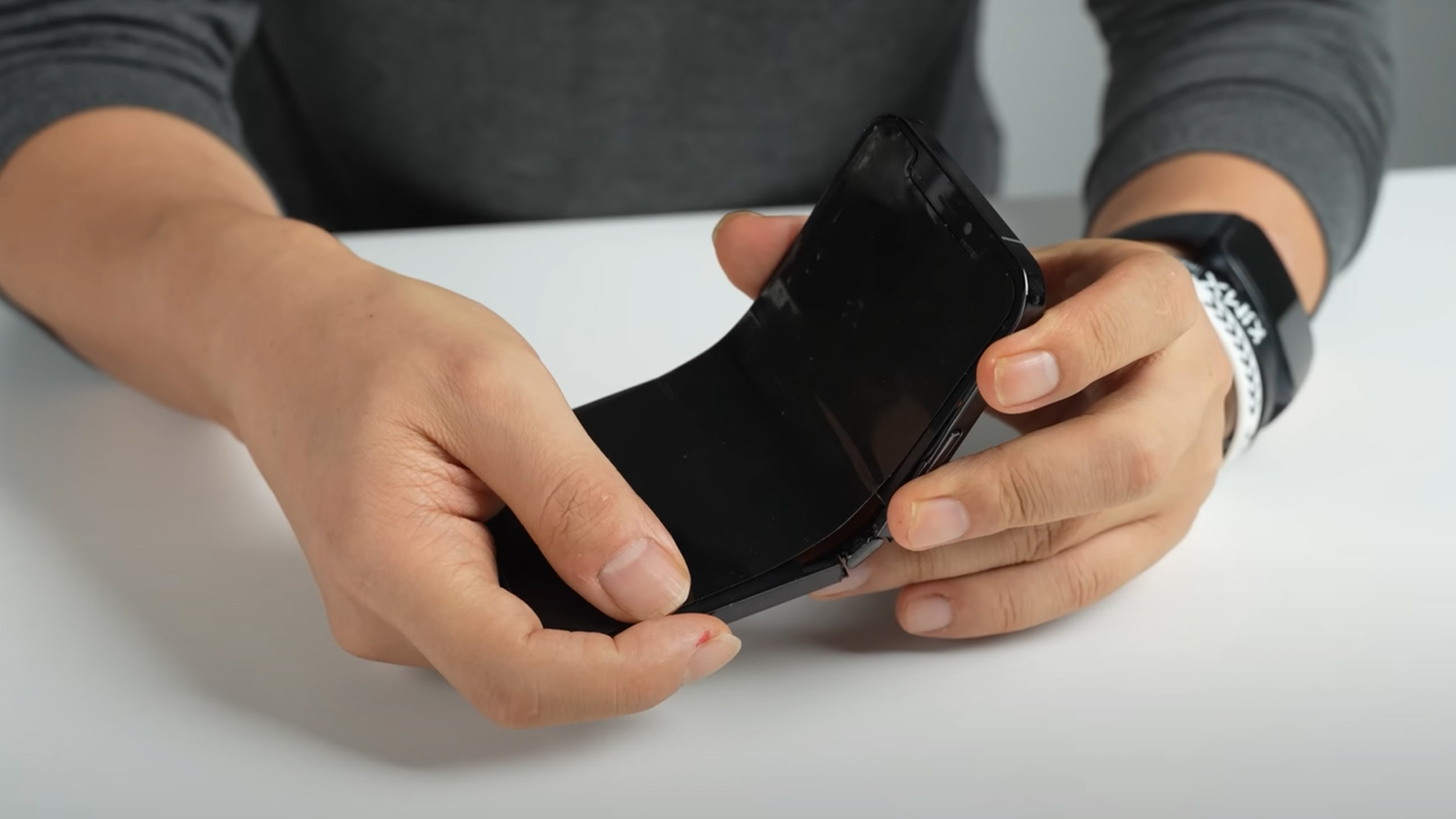
There were a lot of compromises involved in making it, but if Apple's foldable is similar in design to the Samsung Galaxy Z Flip line, then it could look like a much more polished version of this.
iPhone Flip: 5 things we’d like to see
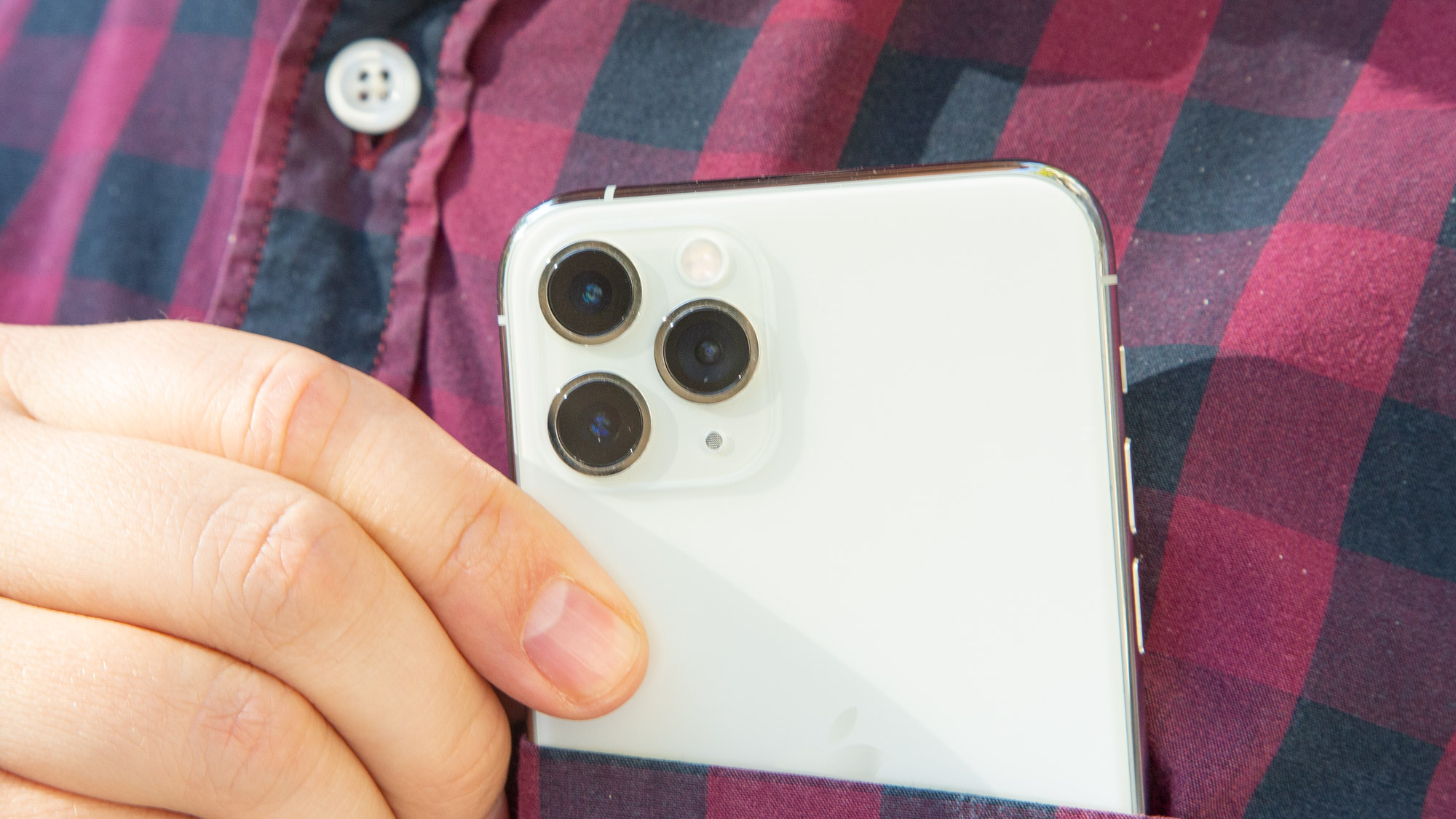
1. Top-tier cameras
Foldables bridge the gap between phones and tablets, but the ones we’ve seen released, like the Samsung Galaxy Fold and Huawei Mate Xs, have packed the best cameras featured on those brands’ other flagship phones.
While there’s no reason to guess Apple wouldn’t do the same, the tech giant hasn’t bothered to upgrade the cameras on its iPads in generations. What's more, given that the iPhone SE 2020 didn’t improve upon the lens of its predecessor, the iPhone 8, Apple set a precedent that could see it give its foldable iPhone a single camera instead of the full suite seen in today's best iPhones.
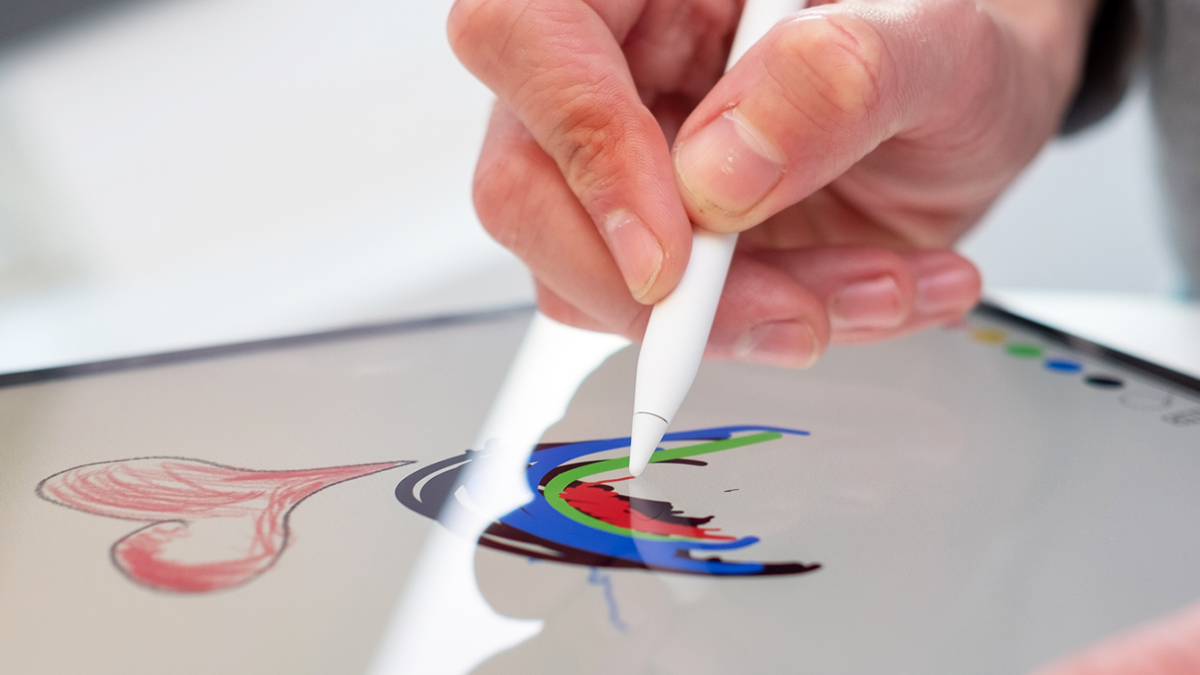
2. Apple Pencil support
One way Apple could easily match other foldables: introduce Apple Pencil support. Samsung introduced stylus integration with its Z Fold series, and given how the Apple Pencil 2 attaches magnetically to the newest iPad Pro tablets, we’d love to see how Apple’s styluses could be integrated with its foldable iPhone.

3. The old Apple polish
Yes, we'll say it: even though the first few rounds of foldables have been impressive for simply pulling off folding screens, they’ve come with design weaknesses, from hinge issues to cracking screens. We’d love to see a design that makes everything move smoothly and stand up to punishment.
Not that Apple’s lineup is unimpeachable, as crackable iPhone displays, malfunctioning butterfly keyboards, and battery-throttling on older iPhones have shown. But in looks and function, at least, Apple has maintained a reputation for sleek and functional design.

4. iPadOS integration
When iPadOS split off from iOS, we got excited for the possibilities of a new operating system forking off to truly take advantage of iPad screen real estate. Thus far, we’ve been pretty pleased with the multitasking features that let us pull up multiple apps at the same time, which we’ve found personally handy in writing in Google docs while looking up stuff in Safari, for instance..
We’d love to see a version of the OS in the foldable iPhone for the same reasons, though of course, there’s a lot of unknowns. Will the device’s display be large enough to properly handle the iPadOS controls? If it expands to 7.9 inches, the size of the iPad Mini’s screen, it conceivably could be able to, but until we know what the foldable will look like, it’s unclear how good a fit iPadOS will be.

5. Strong battery life
Foldable phones like the Galaxy Fold and Huawei Mate X have had respectable battery life for first-generation devices, but we’d like more in Apple’s take on foldable phones. iPhones in general aren’t known for lasting longer than a day, and flagships from Samsung and Huawei pack larger-capacity (in sheer milliamp Hours) batteries that seem to take them past the one-day mark handily.
We’d like Apple to use the extra device space to keep its own foldable last longer than the competition.

Axel is TechRadar's UK-based Phones Editor, reporting on everything from the latest Apple developments to newest AI breakthroughs as part of the site's Mobile Computing vertical. Having previously written for publications including Esquire and FourFourTwo, Axel is well-versed in the applications of technology beyond the desktop, and his coverage extends from general reporting and analysis to in-depth interviews and opinion. Axel studied for a degree in English Literature at the University of Warwick before joining TechRadar in 2020, where he then earned an NCTJ qualification as part of the company’s inaugural digital training scheme.
- Roland Moore-ColyerManaging Editor, Mobile Computing
You must confirm your public display name before commenting
Please logout and then login again, you will then be prompted to enter your display name.